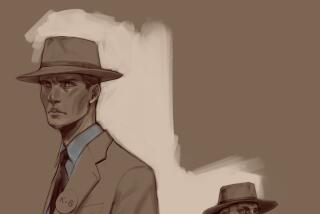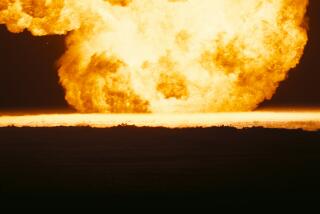Improved Efficiency for Soldiers, Machinery : Army ‘Decorator’s’ Job: Mix and Match
- Share via
YORK, Pa. — Terri Wood is an interior decorator of U.S. Army howitzers--tracked combat vehicles similar to a tank in appearance--being built at BMY, a division of Harsco Corp.
Just so no one gets the wrong idea about what her job entails, however, be advised that she does not match striped wallpaper with earth-toned carpet.
Her job, she says, is to provide soldiers with a work environment that will spawn improved efficiency and safer working conditions on the battlefield.
Wood, 28, is, in military jargon, a systems specialist with an emphasis on human factors engineering. She practices biotechnology--the technology involved with the application of biological and engineering data to problems relating to man and machine.
Reducing Margin of Error
It’s her job to properly match the howitzer and the four-man crew that mans each vehicle.
“In most cases, we’re dealing with men and machines, but we’re becoming more and more conscious of women because women will occasionally maintain the equipment in the Army,” Wood says.
Her ultimate goal, she adds, is to “make the howitzer as easy to use as possible so that we can reduce the margin of error, the amount of training necessary to use the equipment, and eliminate safety hazards.”
In particular, she is concerned with lighting levels, toxic fumes, shock and vibration, lifting requirements and task analysis (so it doesn’t take two people to do the job of one or require a lone person to perform more tasks than are humanly possible).
Varied Background
While those areas might not be as aesthetically interesting as flowered wall coverings and textured carpet, they are considerably more important to soldiers in the field, according to Wood.
Wood went to work for BMY in 1985 after working at the White Sands Missile Range in New Mexico, designing computer software and computer menus. Before that she was a graduate student in experimental psychology at New Mexico State University. She has an industrial engineering background, with particular expertise in statistics and computer science.
Her work designing the cockpit areas of BMY’s howitzers is part of the Howitzer Improvement Program (HIP), through which the existing M109-A2 self-propelled howitzer is enhanced in an effort to meet new U.S. Army requirements.
“These improvements are being made so that the equipment will be more appropriate to changing Army tactics in the battlefield through the end of this century,” Wood says. “Obviously in close confines like this, operations have to be very well orchestrated, which is why we carefully design each person’s role in the cockpit.”
Behind Front Lines
The howitzer, an artillery gun system used to fire projectiles with relatively high trajectories, normally remains behind the front edge of ground forces on the battlefield. A tank--which is usually heavily armored--is a frontal combat vehicle that moves ahead with the foot soldiers in the battle area.
The design of a howitzer starts with the U.S. Army, which sets all specifications, Wood notes.
For instance, she says, BMY’s engineers rough in the first design of the control panel and then she and Jim Hoyt, also a human factors engineer for BMY, evaluate the design from a human factors point of view and suggest changes.
Along with everything else about the howitzer’s design, color schemes are set by the U.S. Army. The cockpit area, for example, is usually white, green or yellow, a factor over which Wood has very little control.
Must Be Cost-Effective
There are times, Wood admits, when the mechanical engineers and human factors engineers don’t agree.
“We’re always able to back up our suggestions through research and mill standards,” she says. “Sometimes parts of the design interact differently with other parts of the system in ways we don’t anticipate. When that happens, we don’t hesitate to make changes where necessary, but changes aren’t introduced unless they can be proved cost-effective.”
Human factors engineering is not necessarily a new phenomenon, Wood says.
“It actually started during World War II when the Army and Air Force built airplanes that were much too powerful for humans to safely control,” she says. “The psychology involved with rearranging cockpit information flow so that it was something that humans could handle was immediately recognized.”
In many respects, howitzers aren’t that much different from the airplanes of 40 years ago, at least in the cockpit areas.
“There’s not very much room in the cockpits to do anything fancy,” Wood says. “So we do the best we can in organizing everything so the crew can operate as efficiently as possible. That’s the bottom line.”
More to Read
Sign up for Essential California
The most important California stories and recommendations in your inbox every morning.
You may occasionally receive promotional content from the Los Angeles Times.













